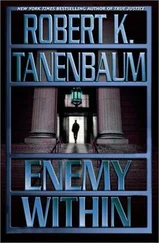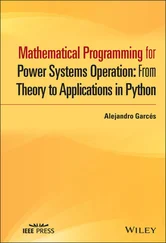Since there is only one memory, if CPU A writes a word to memory and then CPU В reads that word back a microsecond later, В will get the value just written. A memory that has this property is said to be coherent.Coherence plays an important role in distributed operating systems in a variety of ways that we will study later.
The problem with this scheme is that with as few as 4 or 5 CPUs, the bus will usually be overloaded and performance will drop drastically. The solution is to add a high-speed cache memorybetween the CPU and the bus, as shown in Fig. 1-5. The cache holds the most recently accessed words. All memory requests go through the cache. If the word requested is in the cache, the cache itself responds to the CPU, and no bus request is made. If the cache is large enough, the probability of success, called the hit rate,will be high, and the amount of bus traffic per CPU will drop dramatically, allowing many more CPUs in the system. Cache sizes of 64K to 1M are common, which often gives a hit rate of 90 percent or more.
Bus Fig. 1-5.A bus-based multiprocessor.
However, the introduction of caches also brings a serious problem with it. Suppose that two CPUs, A and B, each read the same word into their respective caches. Then A overwrites the word. When В next reads that word, it gets the old value from its cache, not the value A just wrote. The memory is now incoherent, and the system is difficult to program.
Many researchers have studied this problem, and various solutions are known. Below we will sketch one of them. Suppose that the cache memories are designed so that whenever a word is written to the cache, it is written through to memory as well. Such a cache is, not surprisingly, called a write-through cache.In this design, cache hits for reads do not cause bus traffic, but cache misses for reads, and all writes, hits and misses, cause bus traffic.
In addition, all caches constantly monitor the bus. Whenever a cache sees a write occurring to a memory address present in its cache, it either removes that entry from its cache, or updates the cache entry with the new value. Such a cache is called a snoopy cache(or sometimes, a snooping cache) because it is always "snooping" (eavesdropping) on the bus. A design consisting of snoopy write-through caches is coherent and is invisible to the programmer. Nearly all bus-based multiprocessors use either this architecture or one closely related to it. Using it, it is possible to put about 32 or possibly 64 CPUs on a single bus. For more about bus-based multiprocessors, see Lilja (1993).
1.3.2. Switched Multiprocessors
To build a multiprocessor with more than 64 processors, a different method is needed to connect the CPUs with the memory. One possibility is to divide the memory up into modules and connect them to the CPUs with a crossbar switch,as shown in Fig. 1-6(a). Each CPU and each memory has a connection coming out of it, as shown. At every intersection is a tiny electronic crosspoint switchthat can be opened and closed in hardware. When a cpu wants to access a particular memory, the crosspoint switch connecting them is closed momentarily, to allow the access to take place. The virtue of the crossbar switch is that many CPUs can be accessing memory at the same time, although if two CPUs try to access the same memory simultaneously, one of them will have to wait.
Fig. 1-6.(a) A crossbar switch. (b) An omega switching network.
The downside of the crossbar switch is that with n CPUs and n memories, n ² crosspoint switches are needed. For large n, this number can be prohibitive. As a result, people have looked for, and found, alternative switching networks that require fewer switches. The omega networkof Fig. 1-6(b) is one example. This network contains four 2×2 switches, each having two inputs and two outputs. Each switch can route either input to either output. A careful look at the figure will show that with proper settings of the switches, every CPU can access every memory. These switches can be set in nanoseconds or less.
In the general case, with n CPUs and n memories, the omega network requires log 2n switching stages, each containing n/2 switches, for a total of (n log 2 n )/2 switches. Although for large n this is much better than n ², it is still substantial.
Furthermore, there is another problem: delay. For example, for n = 1024, there are 10 switching stages from the CPU to the memory, and another 10 for the word requested to come back. Suppose that the CPU is a modern RISC chip running at 100 MIPS; that is, the instruction execution time is 10 nsec. If a memory request is to traverse a total of 20 switching stages (10 outbound and 10 back) in 10 nsec, the switching time must be 500 picosec (0.5 nsec). The complete multiprocessor will need 5120 500-picosec switches. This is not going to be cheap.
People have attempted to reduce the cost by going to hierarchical systems. Some memory is associated with each CPU. Each CPU can access its own local memory quickly, but accessing anybody else's memory is slower. This design gives rise to what is known as a NUMA (NonUniform Memory Access)machine. Although NUMA machines have better average access times than machines based on omega networks, they have the new complication that the placement of the programs and data becomes critical in order to make most access go to the local memory.
To summarize, bus-based multiprocessors, even with snoopy caches, are limited by the amount of bus capacity to about 64 CPUs at most. To go beyond that requires a switching network, such as a crossbar switch, an omega switching network, or something similar. Large crossbar switches are very expensive, and large omega networks are both expensive and slow. NUMA machines require complex algorithms for good software placement. The conclusion is clear: building a large, tightly-coupled, shared memory multiprocessor is possible, but is difficult and expensive.
1.3.3. Bus-Based Multicomputers
On the other hand, building a multicomputer (i.e., no shared memory) is easy. Each CPU has a direct connection to its own local memory. The only problem left is how the CPUs communicate with each other. Clearly, some interconnection scheme is needed here, too, but since it is only for CPU-to-CPU communication, the volume of traffic will be several orders of magnitude lower than when the interconnection network is also used for CPU-to-memory traffic.
In Fig. 1-7 we see a bus-based multicomputer. It looks topologically similar to the bus-based multiprocessor, but since there will be much less traffic over it, it need not be a high-speed backplane bus. In fact, it can be a much lower speed LAN (typically, 10-100 Mbps, compared to 300 Mbps and up for a backplane bus). Thus Fig. 1-7 is more often a collection of workstations on a LAN than a collection of CPU cards inserted into a fast bus (although the latter configuration is definitely a possible design).
Fig. 1-7.A multicomputer consisting of workstations on a LAN.
1.3.4. Switched Multicomputers
Our last category consists of switched multicomputers. Various interconnection networks have been proposed and built, but all have the property that each CPU has direct and exclusive access to its own, private memory. Figure 1-8 shows two popular topologies, a grid and a hypercube. Grids are easy to understand and lay out on printed circuit boards. They are best suited to problems that have an inherent two-dimensional nature, such as graph theory or vision (e.g., robot eyes or analyzing photographs).
Читать дальше












